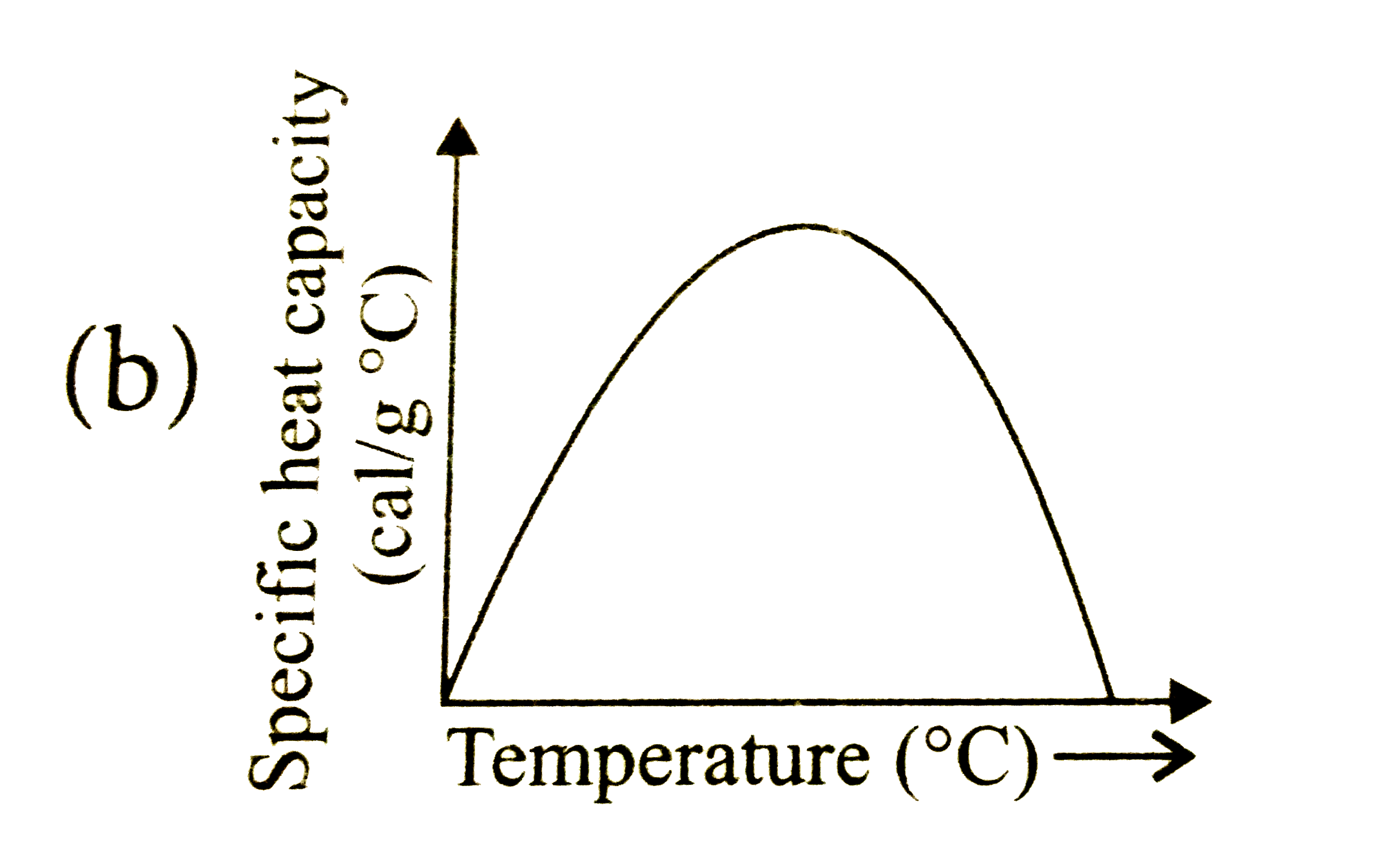Two identical bodies are made of a material for which the heat capacity increases with temperature. One of these is at 100∘C, while the other one is at 0∘. If the two bodies are brought into contact, then assuming no heat loss, the final common temperature is
50∘C
more than 50∘C
less than 50∘C but greater than 0∘C
0∘C
The correct Answer is:B
Due to temperature heat capacity increase so heat capacity of second will greater than first. Let heat capacity are c1&c2 and common temperature T so
mc1(T−0)=mc2(100−T)
T100−T=c2c1>1 {c2>c1}
T>50
Similar Questions
Two identical bodies are made of a material for which the heat capacity increases with temperature. One of these is at 100∘C. While the other one is at 0∘C. If the two bodies are brought into contact, then assuming no heat loss, the final common temperature is
View SolutionHeat given to a body which raises its temperature by 1∘C is
View Solution
Knowledge Check
- Question 1 - Select One
Which one of the following graphs represents variation of specific heat capacity of water with temperature?
A B
B C
C D
D
Two substance of same size are made of same material but one is hollow and the other is solid. They are heated to same temperature, then
View SolutionA square is made of four rods of same material one of the diagonal of a square is at temperature difference 100∘C, then the temperature difference of second diagonal:
View SolutionOne kilogram water at 0∘C is brought into contact with a heat reservoir at 100∘C. Find
View SolutionTwo identical beakers with negligible thermal expansion are filled with water to the same level at 4∘C. If one says A is heated while the other says B is cooled, then:
View SolutionTwo identical beakers with negligible thermal expansion are filled with water to the same level at 4∘C. If one says A is heated while the other says B is cooled, then:
View SolutionTwo identical beakers with negligible thermal expansion are filled with water to the same level at 4∘C. If one says A is heated while the other says B is colled, then:
View SolutionA rigid container of negligible heat capacity contains one mole of an ideal gas. The temperatures of the gas increases by 1∘C if 3.0 cal of heat is added to it. The gas may be
View Solution
